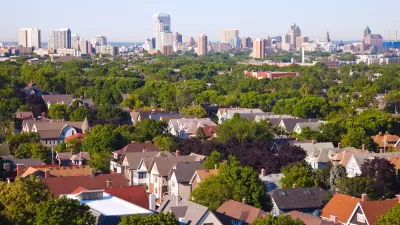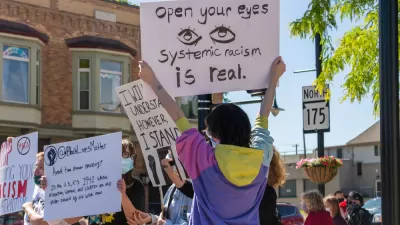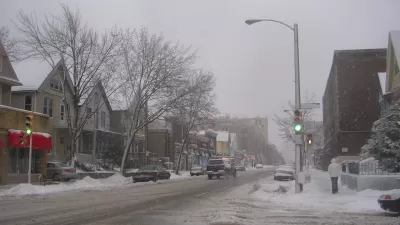The city has plans to increase affordable housing, but some areas are seeing more progress than others.

Susan Nusser reports that Milwaukee’s attempts to deal with a lack of affordable housing is falling short of original goals. Earlier this year, Mayor Tom Barrett presented a plan to build or improve 10,000 units in the next decade. But while development in downtown is bringing a slew of luxury units to the city, progress on the affordable housing front is still lagging, says Nusser.
An issue complicating affordable housing efforts is the concentrations of poverty and foreclosures that resulted from the housing crisis a decade ago. Milwaukee is not alone in facing this challenge, says Nusser:
One of the problems facing cities like Milwaukee—former manufacturing cities that have suffered severe population drops after de-industrialization—are the pockets of concentrated poverty that fail to improve even as other areas recover. As the desirable neighborhoods rebuild after the recession, impoverished ones slip further behind, and deep income disparities result.
This hypervacancy perpetuates a cycle where neighborhoods deteriorate and some people are able to move away while others are forced to stay.
Community advocates say that broader strategies, rather than ones that focus on just on housing policies and programs, are needed to turn these neighborhoods around, keep residents, and attract new ones. “Neighborhood residents are interested in developing cooperative housing and land grants that would give the community some authority over board-ups and vacant lots,” says Nusser.
FULL STORY: Can Milwaukee Really Create 10,000 Affordable Homes?

Alabama: Trump Terminates Settlements for Black Communities Harmed By Raw Sewage
Trump deemed the landmark civil rights agreement “illegal DEI and environmental justice policy.”

Study: Maui’s Plan to Convert Vacation Rentals to Long-Term Housing Could Cause Nearly $1 Billion Economic Loss
The plan would reduce visitor accommodation by 25% resulting in 1,900 jobs lost.

Why Should We Subsidize Public Transportation?
Many public transit agencies face financial stress due to rising costs, declining fare revenue, and declining subsidies. Transit advocates must provide a strong business case for increasing public transit funding.

Paris Bike Boom Leads to Steep Drop in Air Pollution
The French city’s air quality has improved dramatically in the past 20 years, coinciding with a growth in cycling.

Why Housing Costs More to Build in California Than in Texas
Hard costs like labor and materials combined with ‘soft’ costs such as permitting make building in the San Francisco Bay Area almost three times as costly as in Texas cities.

San Diego County Sees a Rise in Urban Coyotes
San Diego County experiences a rise in urban coyotes, as sightings become prevalent throughout its urban neighbourhoods and surrounding areas.
Urban Design for Planners 1: Software Tools
This six-course series explores essential urban design concepts using open source software and equips planners with the tools they need to participate fully in the urban design process.
Planning for Universal Design
Learn the tools for implementing Universal Design in planning regulations.
Smith Gee Studio
Alamo Area Metropolitan Planning Organization
City of Santa Clarita
Institute for Housing and Urban Development Studies (IHS)
City of Grandview
Harvard GSD Executive Education
Toledo-Lucas County Plan Commissions
Salt Lake City
NYU Wagner Graduate School of Public Service





























